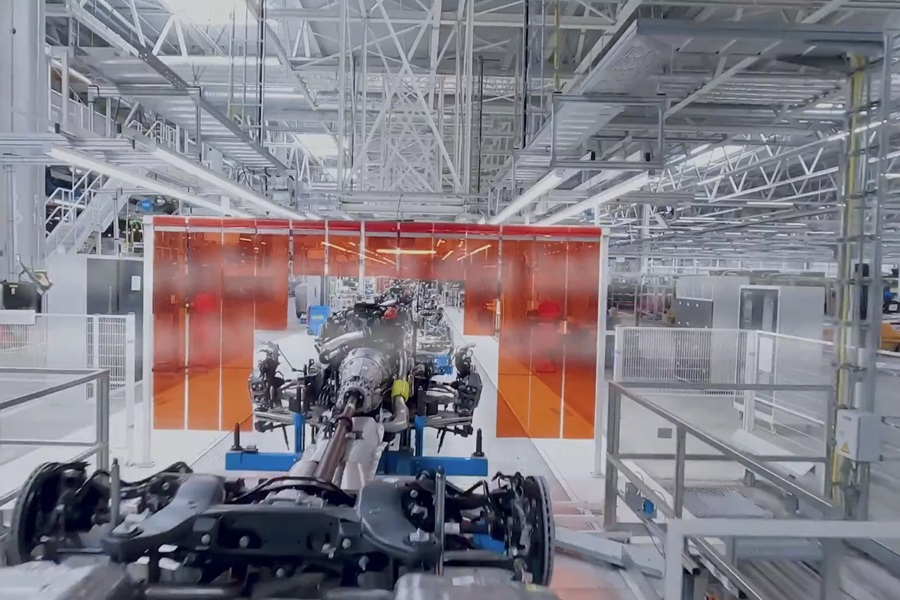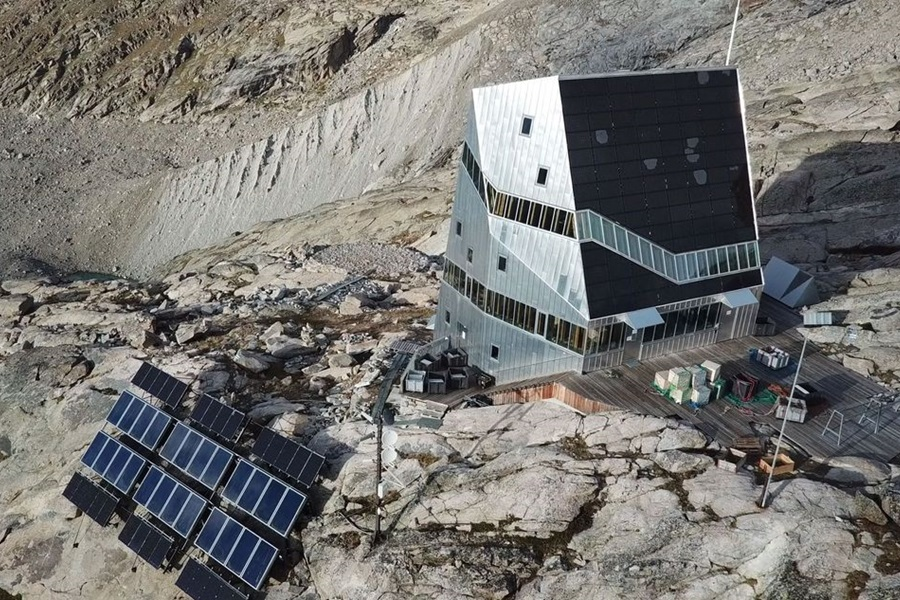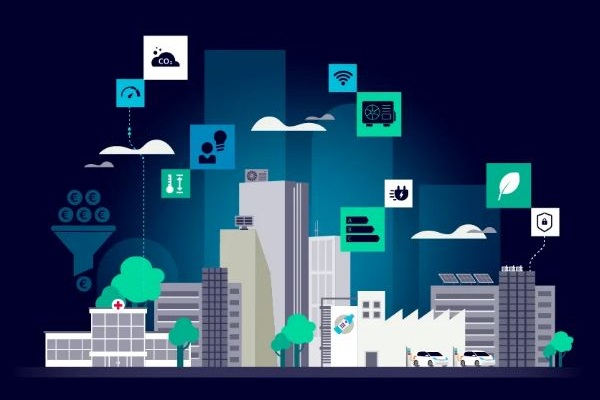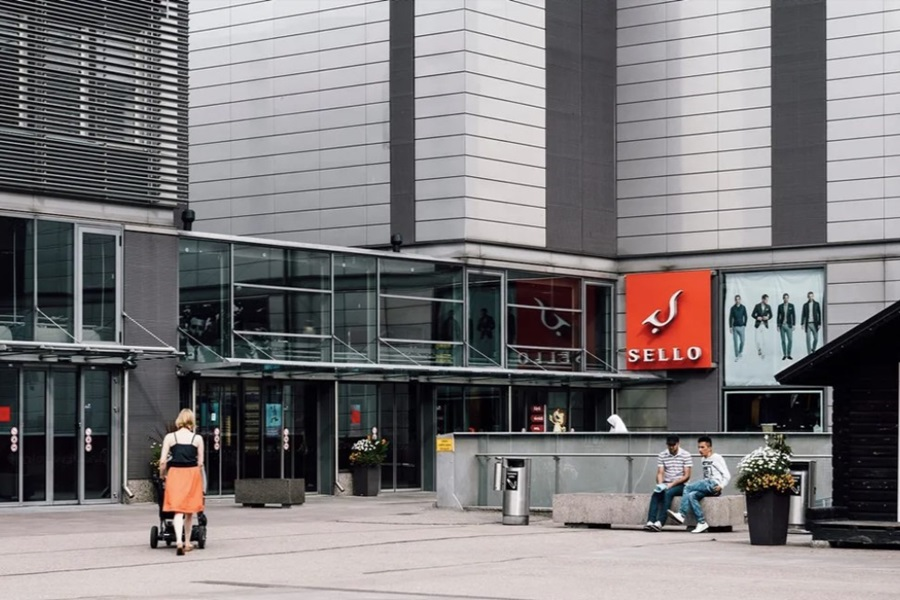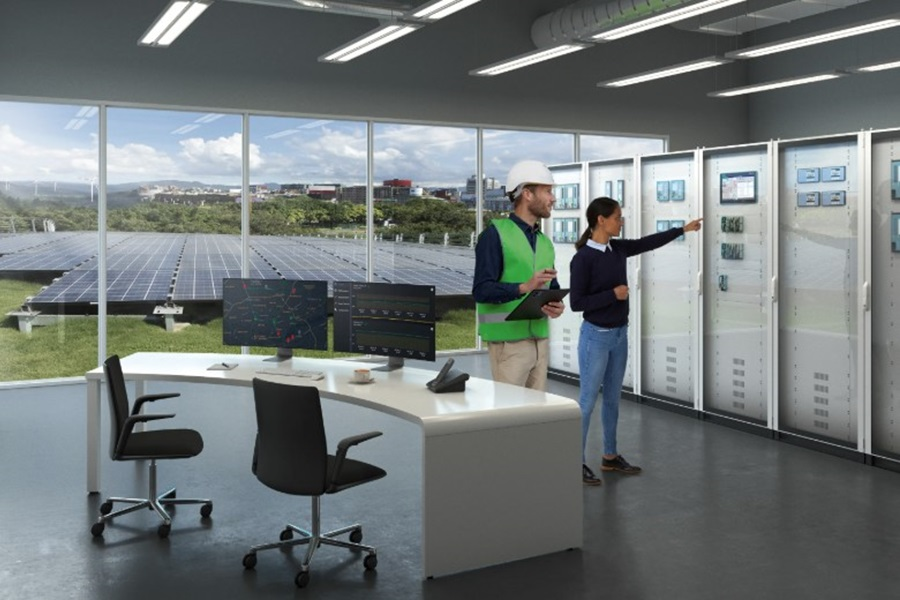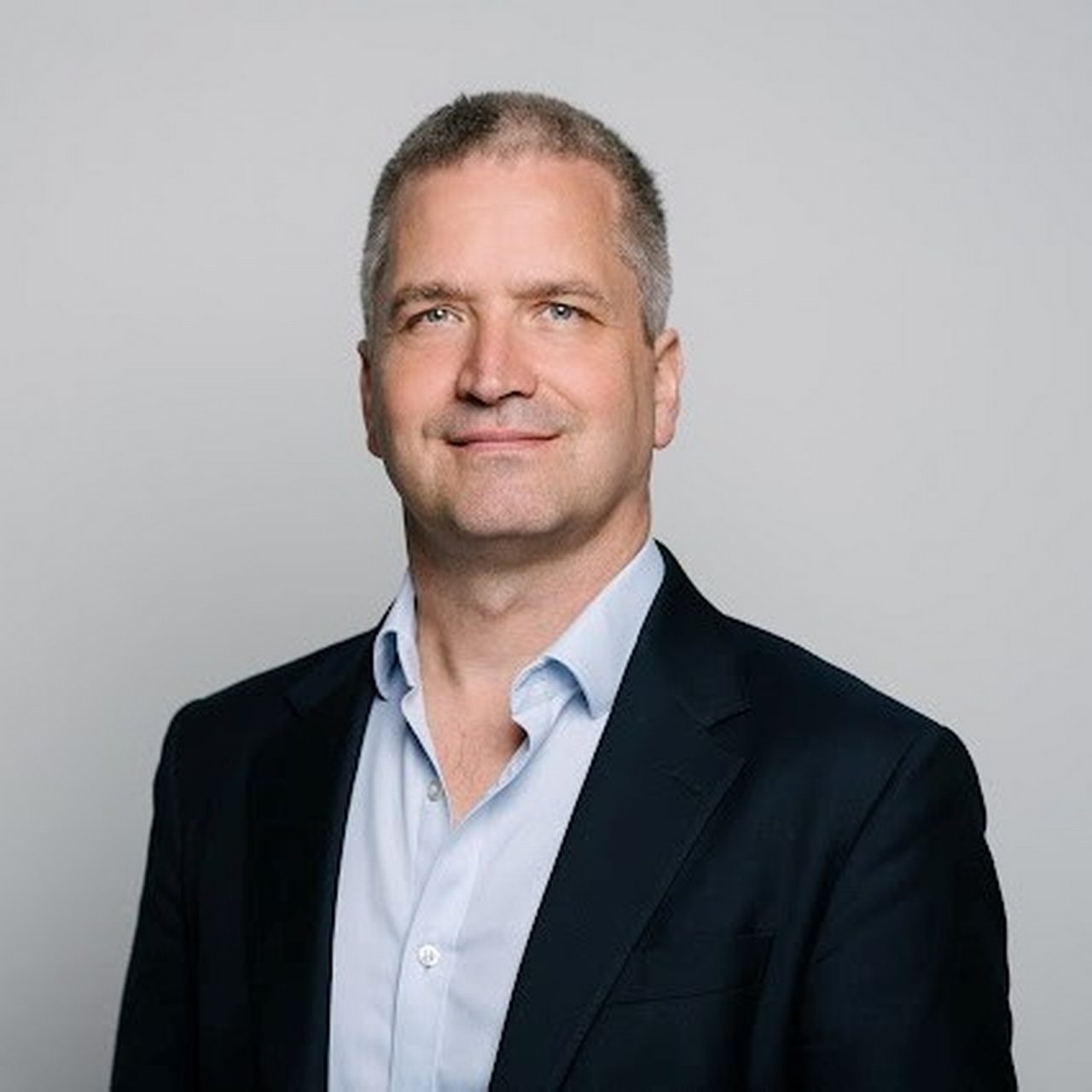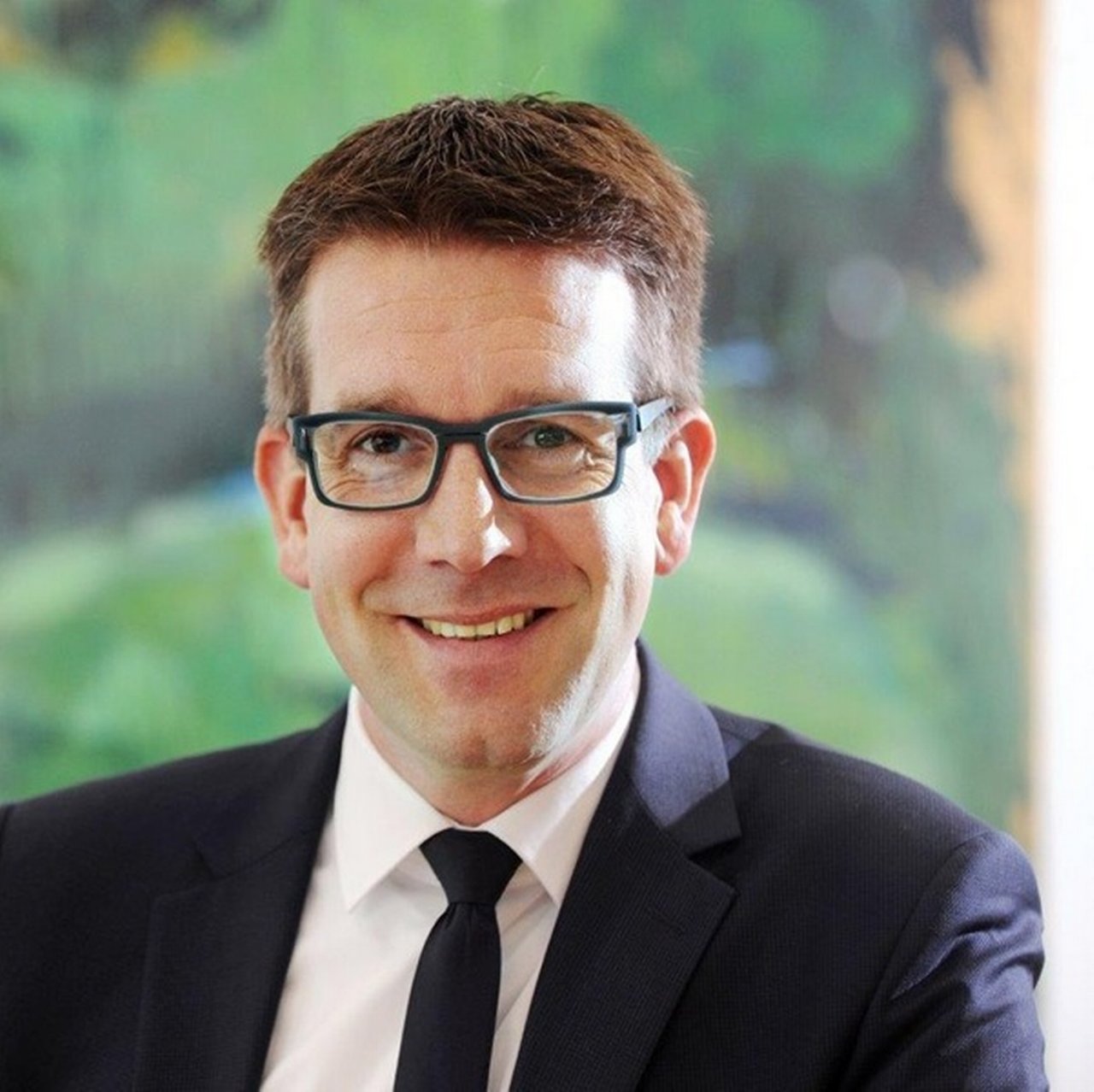
Saving energy with networks: how smart buildings are becoming more efficient – together
Smart buildings, connected infrastructure and intelligent data: Rainer Haueis from Siemens Smart Infrastructure explains how digital technology is turning buildings into autonomous actors – and why the best energy is the energy you don’t use.
We spend 90 percent of our lives in buildings, says Rainer Haueis, Head of “Buildings” at Siemens Smart Infrastructure. He explains how digital and AI-driven technologies are making buildings smarter – with the goal of using energy more efficiently, automating processes and lowering operating costs. What excites him most is the smart tech you don’t see: “The greatest compliment for us is when building users don’t even notice everything we’re doing behind the scenes to achieve more energy efficiency, sustainability and comfort.”
Rainer Haueis, what makes a building smart?
Building lifecycles are long – we’re talking 30 years and more. When we say “smart,” we mean solutions that help run a building more efficiently, from planning to demolition. The discussion often focuses on construction, but three–quarters of energy consumption is during operations. That’s exactly where we can optimise.
In addition to traditional approaches like insulation, digital solutions for building systems have emerged in recent years, right up to the cloud. Sensors and actuators – capturing conditions and triggering actions – are what make buildings energy efficient and sustainable.
What kind of things are we talking about exactly?
Almost anyone can stick a wireless IoT sensor on a wall that captures data like temperature or humidity and sends it on. With that information, you can start small at home and gain transparency into what you consume and where you can save.
The same applies to large facilities. You can control office lighting via sensors – the light only turns on when a desk is actually occupied – or manage shading – the blinds lower when the sun is out. And when access control systems tell you how many people are in the building and how they move, you can pass that information on. In the elevator you might then see: “Cafeteria currently at 98 percent capacity.” And you might decide to eat a bit later.
You don’t always see the tech, but it’s there, doing something. That’s how buildings become “intelligent.”
Data is the linchpin – in your example, weather data and personal data. Where does it come from, and what do you do with it?
Of course there are data privacy questions: How long is data stored? Is it personalised? And much more. Company policies, the works council, approvals – we’re subject to these rules, just like our customers. But we’re not trying to archive data. We don’t want to generate personal data; we want to create value. By intelligently linking all this information, you can unlock the next 10 – 20 percent in energy efficiency.
Cybersecurity is our top priority – and not just in theory: we develop our own solutions for smart buildings and help operators make their systems more secure. Our experts have designed a specialised method we call the Cybersecurity Gap Assessment. It shows where vulnerabilities exist and provides recommendations that are immediately actionable. The resulting report delivers full transparency across all technical systems and weaknesses – including concrete measures.
Naturally, we keep our customers’ systems up to date, ensure they meet regulatory requirements, and protect them as effectively as possible against attacks.
Are there areas where smart building tech is already essential for smooth operations?
Take the pharma or semiconductor industry: there are “clean rooms” that need very specific conditions, like positive air pressure to keep dust out. Suddenly, building technology sits at the heart of the production process. It’s about preventing downtime, operational safety and availability.
Or consider a completely different example: museums also require very specific conditions – think of paintings. Or paper, where humidity is crucial. One example is the Berlin State Library where we reduced energy consumption by 52 percent. The measures also led to a CO₂ reduction of 3,745 tons per year and around 20 million euros in guaranteed savings over ten years.
Intelligent data use for optimum resource deployment – that’s the key!
In hospitals, building technology isn’t just a side note either. The biggest cost factor there, alongside personnel, is whether the medical infrastructure is being used to the optimum. Our colleagues at Siemens Healthineers offer models where you don’t buy equipment anymore – you pay per use.
If you know, by smartly linking information, how many patients are coming and how beds are occupied, you can manage staff and equipment better and deploy resources much more efficiently. Take an MRI scanner: if I understand its utilisation and connect that with building data, I can cut waiting times and run the operation more efficiently.
In short: intelligent data use for optimum resource deployment – that’s the key!
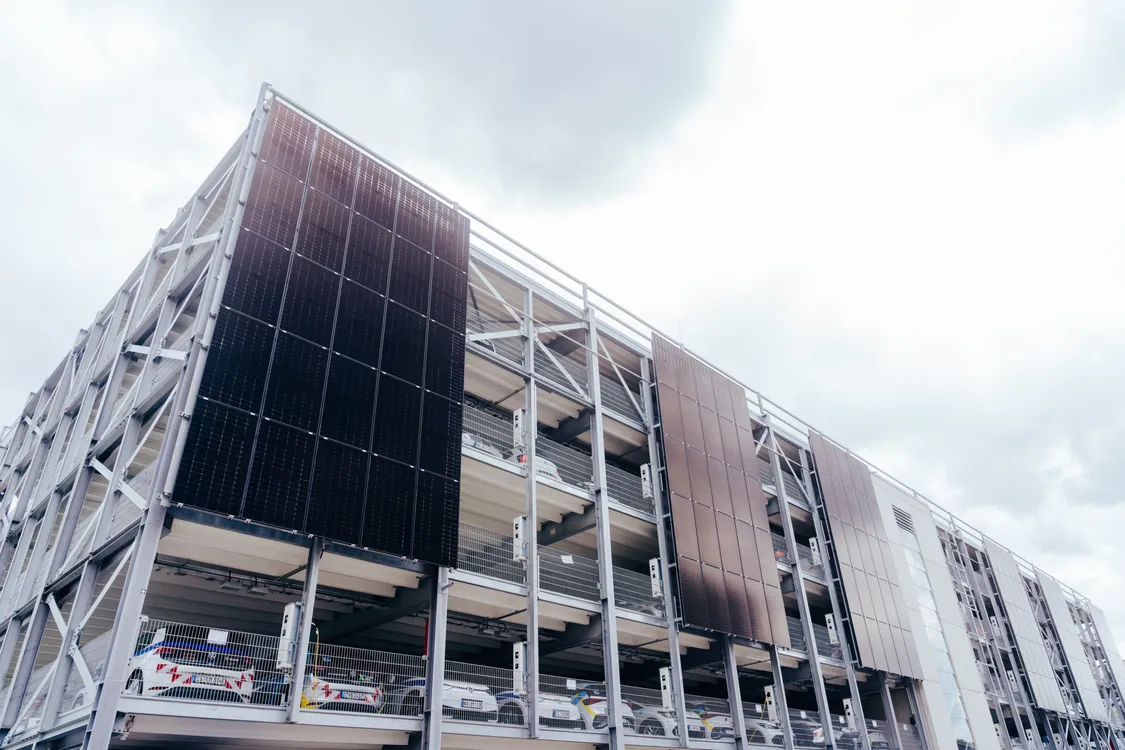
Siemens Stadtwerke Stuttgart
There are good solutions for individual buildings to manage loads intelligently. But it really packs a punch when you bundle multiple sites.
You want buildings to be active agents that collaborate intelligently with utilities, industry and transport as part of an ecosystem. How do you make that work?
The big challenge is the sheer amount of data. How do we bring it together? Many stakeholders in construction keep data in their own systems or clouds. If we link these sources, couple generators and consumers intelligently, and use forecasts – we can squeeze out even more efficiency.
Many large customers – industry, airports, hospitals – now have photovoltaics alongside traditional energy supply. They have backup power systems for emergencies, combined heat and power (CHP) units and battery storage. Generators already work together intelligently. We asked ourselves: how can we make consumption smart, too? There are good solutions for individual buildings to manage loads intelligently. But it really packs a punch when you bundle multiple sites.
And how do you do that?
With a so–called microgrid controller, I can coordinate various energy loads across the system. Take an airport, for example: imagine all the different things that run on electricity. E-buses, for instance, moving backwards and forwards across the apron. If a chiller kicks in for half an hour somewhere else at the airport, it's no problem. Granted, it generates a lot of waste heat, but in a large, connected system that heat is captured and used elsewhere immediately.
The more buildings in my network, the more options I have – especially if I can also tap the external grid outside the microgrid.
Any other examples where energy generated in one place immediately finds a consumer elsewhere?
A very exciting municipal project is Siemensstadt in Berlin, part of our company’s history. We have plans to install a heat exchanger in the sewers – one kilometer long – and use that heat to warm our buildings. I find that fascinating.
Or data centres: you can use the waste heat from all those servers. We call this sector coupling, “power–to–X.” It doesn’t matter who the end consumer is – electricity to hydrogen, hydrogen to heat, hydrogen to electricity.
And all of this should already be factored in at the planning stage? Sounds complex…
It is. That’s why simulation, testing, and optimisation before construction are so important. We plan such projects using a digital model – a digital twin – that involves all stakeholders, pulling in a wide range of data and information, from building models to climate data to potential consumption profiles. That way, energy flows can already be accounted for at the planning stage.
No human can process all that alone – you need software and AI.
No human can process all that alone – you need software and AI. Once the asset is built, we use real–world data to keep optimising. It works very well – we’ve had a 100 percent hit rate.
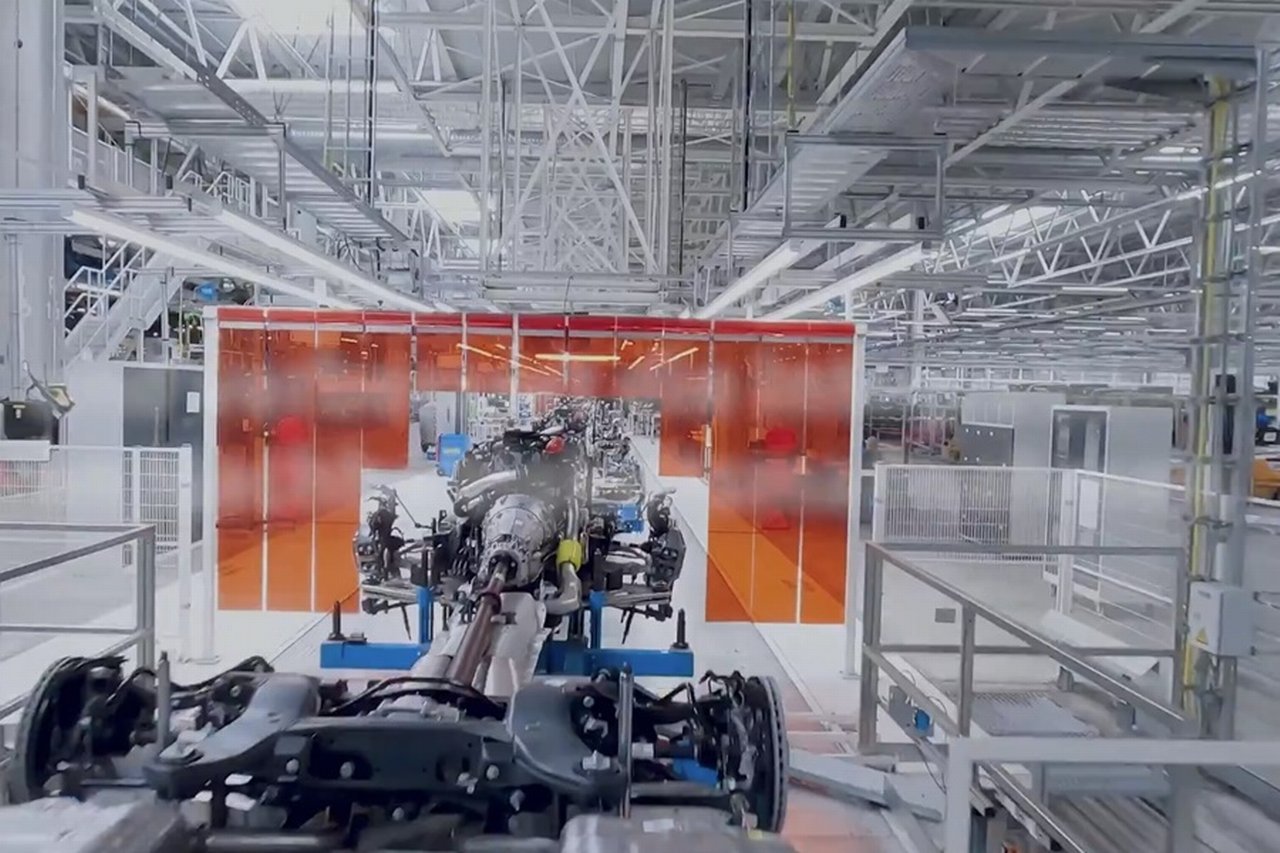
An Energy Twin with Mercedes–Benz
Together with Mercedes–Benz, Siemens has developed a Digital Energy Twin to make sustainable factory planning in the automotive industry easier. The innovative tool helps the automaker run all its production sites worldwide on 100% renewable energy by 2039.
The tool evaluates proposed planning scenarios for energy consumption and recommends optimisations – including energy efficiency, associated cost savings and emissions reductions.
The result: a significant reduction in energy use and CO₂ emissions, long–term operational reliability and full transparency across all building–technology processes – a flagship project for smart modernisation of existing assets.
How do you actually know whether your measures are working?
The best energy is the energy you don’t use. We try to cut consumption by making the most of the energy available. That typically improves our customers’ CO₂ footprint and helps them reach their climate targets.
What role does the public sector play?
Municipalities are increasingly focused on this. For example, we’ve entered an innovation partnership with the public utility company in Stuttgart. Electricity, heat and mobility are being linked across sectors – a showcase for an urban energy transition. We support with our technology, innovations and expertise. Unlike us, municipal utilities also serve private end consumers – which we don’t – so it’s a win–win.
Another great example of a partnership with a municipal utility is the one in Wunsiedel. It might be small, but it’s extremely innovative and visionary in hydrogen production. Partnerships like these are essential to break data out of silos and use it broadly and to best effect.
What do you want from policymakers to promote sustainable building?
What’s crucial is that we move faster overall – especially with smart grids and sector coupling across electricity, heat and transport. When wind power in the north is curtailed because there aren’t enough lines to the south, you see where speed is needed. A lot is happening – but not nearly enough.
Regulation helps get certain things moving – and in residential construction, subsidies really are an incentive. But generally: if a solution pays back quickly, investment willingness rises significantly.
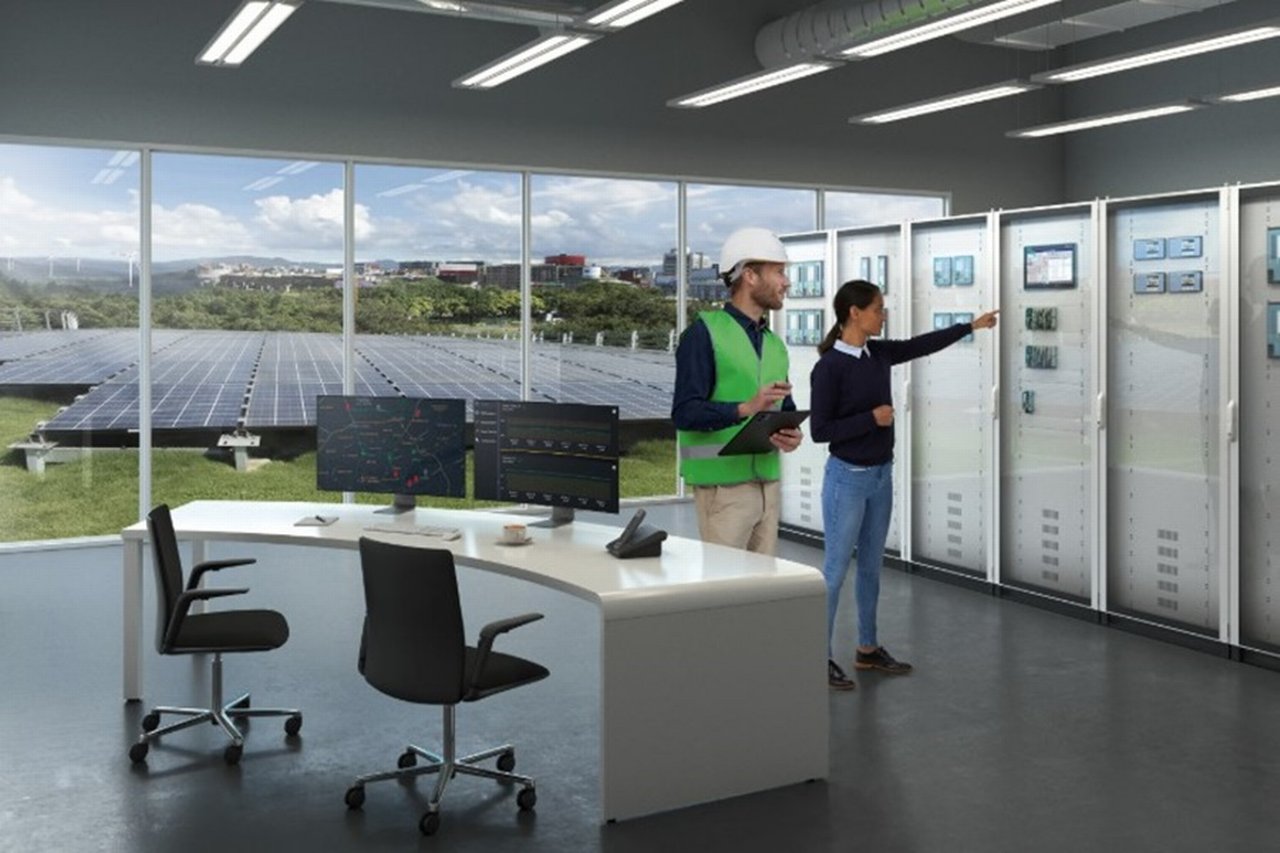
Siemens Smart grid
If a solution pays back quickly, investment willingness rises significantly.
Smart infrastructure in practice: three inspiring examples
Show content of Berlin State Library
Siemens modernised the Staatsbibliothek zu Berlin (Potsdamer Straße building) with intelligent building technology to better protect cultural assets while saving energy. Deployed solutions included sensors, LED lighting, modern HVAC technology and the Building X digital platform.
The measures led to 52% energy savings, a 3,745–ton annual CO₂ reduction and around 20 million euros in guaranteed savings over ten years.
The special challenge: adjusting climate control to meet strict conservation requirements for valuable books and documents, while maximising energy efficiency and minimising disruption to ongoing library operations.
The project is part of a nationwide programme to decarbonise public buildings and shows how digitalisation and sustainability can be successfully combined.
Show content of Stadtwerke Stuttgart
Siemens has entered a technology partnership with Stuttgart’s public utility company Stadtwerke Stuttgart GmbH to jointly support the city’s goal of becoming climate–neutral by 2035.
The first project: equipping the new “EnergieCampus” headquarters with intelligent building technology and energy management. Via the Siemens Xcelerator platform, electricity, heat and mobility are connected across sectors – a flagship project for the urban energy transition.
The project stands out because technology, sustainability and partnership come together in an exemplary way – and it shows how Siemens actively contributes to transforming urban infrastructure.
Show content of Monte Rosa Hut
The Monte Rosa hut is located in the Swiss Alps, at 2,883 meters above sea level and is considered one of the most modern mountain huts in the world. Despite difficult winter access, challenging weather conditions and no grid connection, the goal was to create a comfortable environment for guests and staff with minimal environmental impact.
Siemens met these requirements with an intelligent, cloud–based building management system. Desigo CC and the Building X digital platform as the “operating system” enable efficient control and monitoring of energy flows – even remotely. This reduces CO₂ emissions and allows the integration of battery storage and renewables (photovoltaics, solar thermal), ensuring an almost self–sufficient, sustainable hut operation.
How long does it take for smart–building investments to pay off?
For our own large sites, we accept longer payback periods of five, six, seven years – otherwise many sensible measures would fall victim to strict ROI criteria. For our customers, we’ve developed new concepts. For example, we work with energy contracting. We assess current consumption, then design an efficiency concept and calculate savings, costs and financing needs.
Think of it like this: the customer asks, “Where do I get the 2 million euros for the investment?” We say, “We’ll front the 2 million, and we’ll share the money from the energy you save.” Once everything’s paid back, the customer gets the full benefit. In short: the savings pay for the investment. That’s win–win–win.
Looking a few years ahead – where is this going?
Next up is the autonomous building. Linking everything we’ve talked about, powered by AI. The goal: the building responds to changes on its own and detects issues before they even occur.
Next up is the autonomous building
We’ve already talked about buildings ingesting weather data – automatically adjusting heating or cooling. Predictive maintenance goes even further: as we know from mobility, sensors and AI analyse data, recognise patterns – say, when a motor runs harder or power draw increases – and alert you before something fails. You don’t change your car’s oil filter on a fixed schedule; you change it exactly when it makes sense. Buildings will work the same way.
We call it technology with purpose – technology that serves a meaningful goal and makes everyday life better.
This page was published in November 2025.
Siemens and Deutsche Bank
The collaboration between the two companies dates back to the late 19th century. In 1897, Siemens was converted into a publicly listed stock corporation with the support of Deutsche Bank. In the same year, the two companies began close cooperation in planning, building and financing the Berlin elevated and subway railway, the seed of today’s Berlin public transport system.
Most recently, in September 2024, Deutsche Bank was involved in issuing a 300 million euro digital bond for Siemens AG via the SWIAT blockchain platform. And in July 2025, the CEOs of both companies – together with other representatives of German industry – presented the federal government with a cross–industry investment initiative for Germany.
About Rainer Haueis
Rainer Haueis has led sales for the Buildings unit within Smart Infrastructure at Siemens AG in Germany since 2024. He also held other leadership roles within the organisation after previous assignments in Nuremberg, Leipzig and Frankfurt. Haueis is a qualified engineer and studied Electrical Engineering at the Georg Simon Ohm University of Applied Sciences Nuremberg.
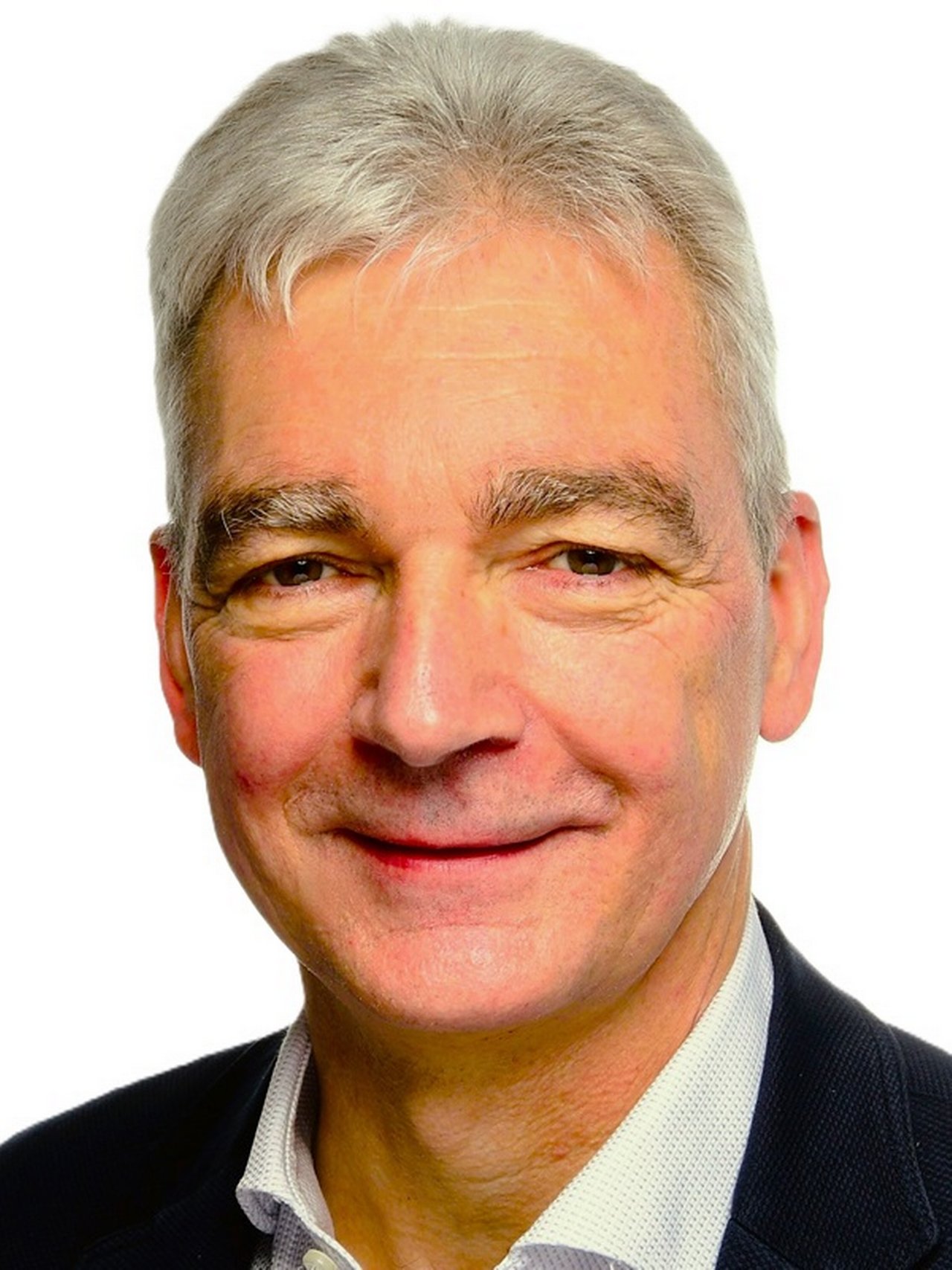
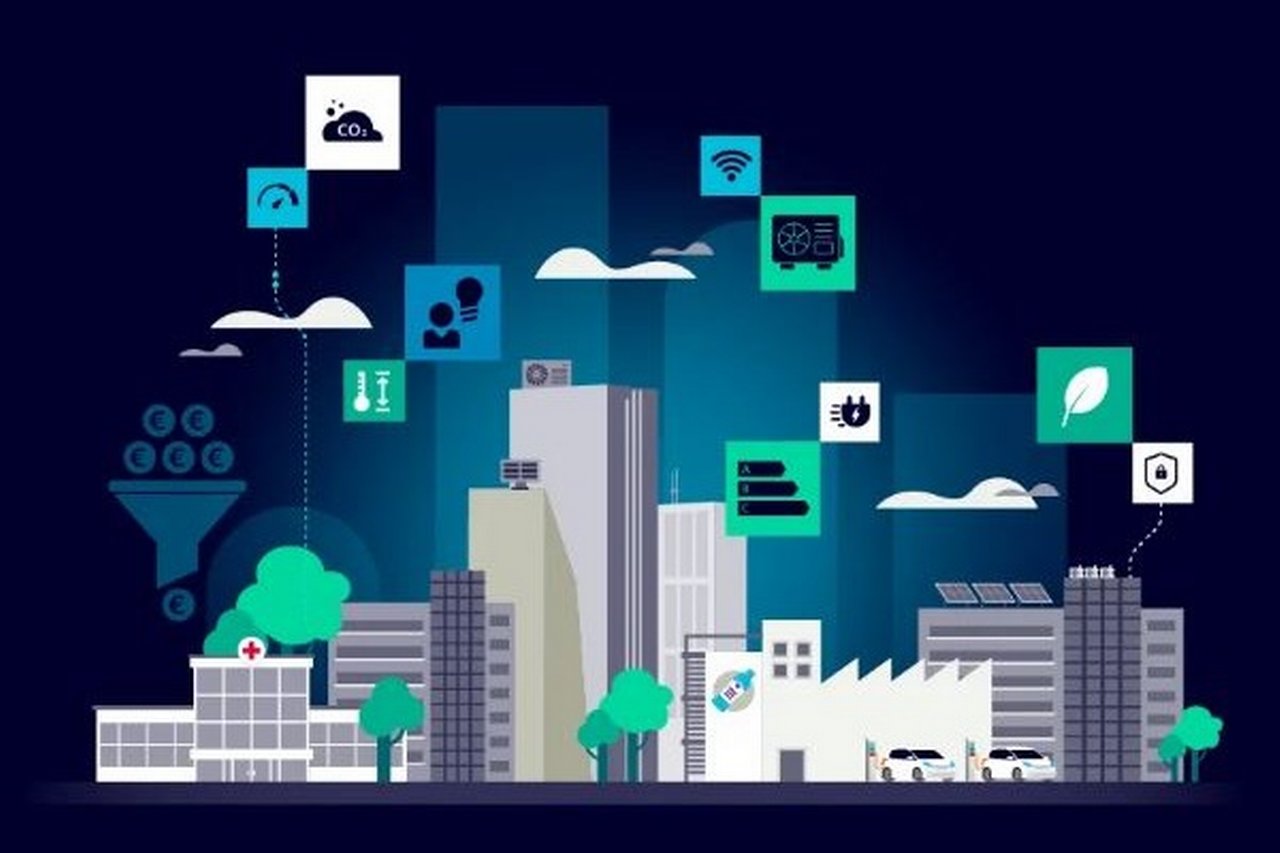
Siemens Smart Infrastructure
Within Smart Infrastructure, the Buildings unit’s job is to make buildings smarter through digital and AI–driven technologies – with the aim of using energy more efficiently, lowering operating costs, automating processes, and increasing comfort and safety. The core product is Building X, an open cloud platform that centralises building data and makes it usable for various applications – from energy and security management to virtual building views and integrating external systems. This helps customers worldwide with the digital transformation of their buildings while contributing to sustainability and climate protection.

Maike Tippmann
… is responsible for global communications projects at Deutsche Bank. A self-confessed city dweller, she has never built anything herself but is fascinated by the potential of sustainable construction. The conversation made her realise how much scope there is for the construction industry to help protect our planet.
Recommended content
Responsible Growth | Opinion
“The elephant in the climate room” “The elephant in the climate room”
Philipp Misselwitz has a vision: the construction sector can protect the planet rather than harm it. In an interview, he shares how this might work.
“The elephant in the climate room” Unlock expert insightsResponsible Growth | Video Story
Sustainable student living Sustainable student living
Project Development company UPP is building sustainable student accommodations across the UK, limiting carbon production in the building lifecycle.
Sustainable student living Come inResponsible Growth | Expert View
How does sustainable building work? Sustainable building: It’s all about the right order
Housing crisis and climate change: The building sector drives CO₂ – refurbishment is key to making sustainable building a reality. Alf Meyer zur Heyde knows how.
How does sustainable building work? How does sustainable building work?
